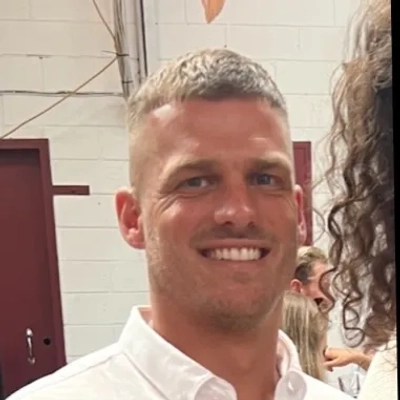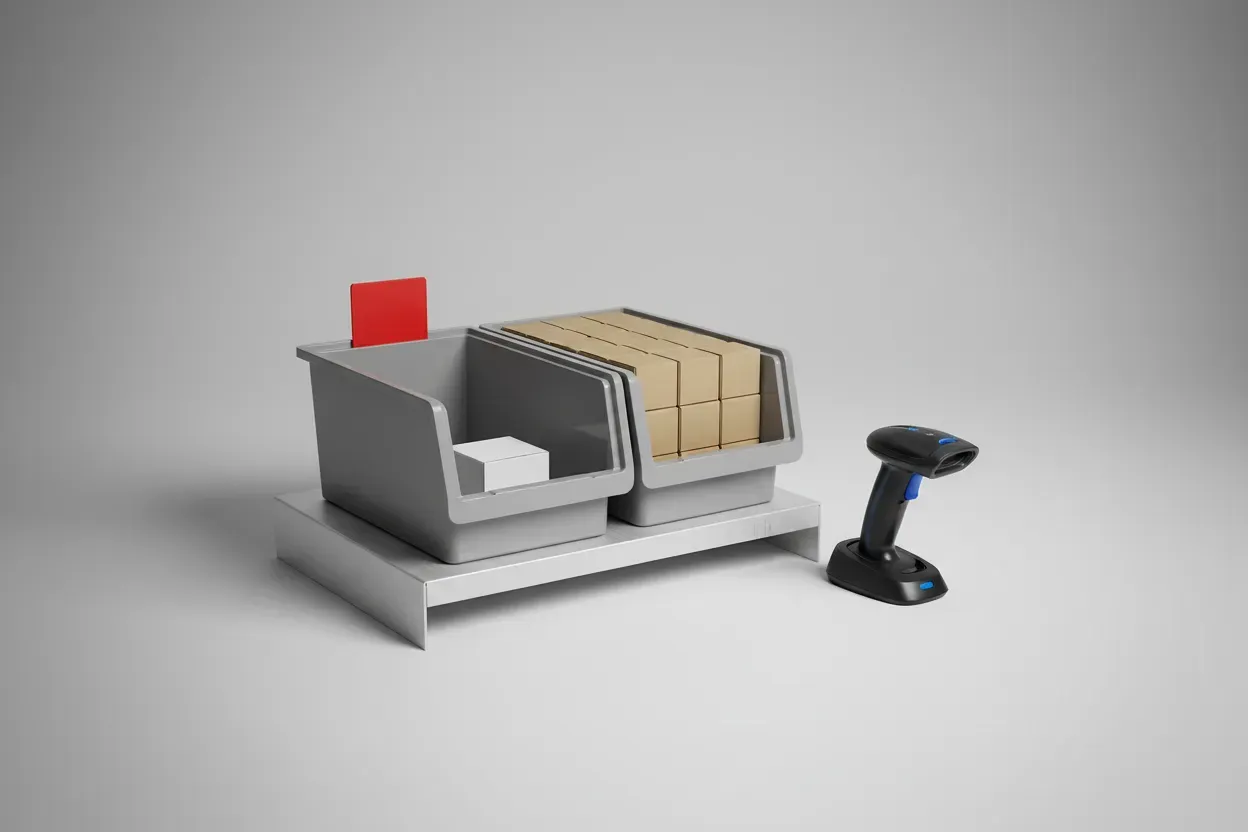24 Tips for Negotiating Better Salary Rates
Negotiating better rates can significantly impact your professional success and financial well-being. This article presents expert-backed strategies that have proven effective in securing more favorable compensation. From defining your non-negotiable value to demonstrating problem-solving skills, these practical tips will equip you with the knowledge to confidently approach your next negotiation.
- Define Your Non-Negotiable Value
- Tie Your Ask to Hard Data
- Leverage Referral Credibility Stacking
- Link Salary to Measurable Outcomes
- Demonstrate Cost of Problems Solved
- Ask for Their Budget First
- Strike When Your Value Is Clear
- Show Problem-Solving Through Crisis Management
- Stack Evidence for Irrefutable Case
- Demonstrate Scalability Impact
- Document Wins with Concrete Examples
- Package Expertise into Comprehensive Solutions
- Reframe as Collaborative Problem-Solving Discussion
- Research Opposing Party’s Behavior Patterns
- Offer Immediate Availability as Leverage
- Create Good-Better-Best Financial Framework
- Time Negotiations Around Proven Performance
- Propose Trial Periods with Success Metrics
- Align Asks with Budget Cycles
- Shift Focus to Desired Outcomes
- Prioritize Core Values Over Immediate Gains
- Demonstrate Deep Product Knowledge
- Anchor Specific Number with Confidence
- State Value Clearly and Concisely
Define Your Non-Negotiable Value
My top tip for negotiating better rates is to clearly define your non-negotiable value and educate the other party on the tangible return on investment they will receive. Too often, people undervalue their expertise by letting “cheap” or “fast” compromise “good,” which for me is always non-negotiable.
For instance, I explain that a $1,200 résumé, while an investment, can recoup its cost in mere days for a high-earning professional who might otherwise lose thousands weekly by prolonging their job search. This approach shifts the conversation from cost to the direct financial benefit and strategic advantage my services provide.
This tactic is effective because it positions my work as a critical investment, not an expense. I also apply this by setting express charges so high ($1,000, then $2,000) that unreasonable demands for immediate, rushed work are simply not cost-effective, valuing my time and ensuring I can always deliver the quality my clients deserve.
 Margaret Phares
Margaret Phares
Executive Director, PARWCC
Tie Your Ask to Hard Data
I’m with Spencer James Group, where I regularly work with job seekers in the employee benefits and insurance sectors to help them secure and negotiate job offers.
My top tip for negotiating a higher salary: tie your ask to hard data, not just your personal needs. This starts before you get to the negotiating table. Do your research to understand the current compensation benchmarks for your role, location, and industry. Use this information to come up with a specific range you’re looking for. Then, when you’re in the negotiation, start at the higher end of that range, connecting your ask to the value you’ll bring to the role thanks to your experience, skills, education and certifications, and the impact you’ve made in your current or past roles.
The reason this is effective is that it makes your salary request harder to dismiss. Arguments based on your personal need are subjective, and that makes them easier for employers to push back against. It’s much harder for an employer to argue with objective, third-party data and quantifiable results. Taking this approach shifts the conversation so it’s not just a personal request, but an investment that’s aligned with the business’s needs.
 Steve Faulkner
Steve Faulkner
Founder & Chief Recruiter, Spencer James Group
Leverage Referral Credibility Stacking
I’ve seen advisors dramatically increase their rates by leveraging what I call “referral credibility stacking.” Instead of just asking for higher fees, successful advisors bring a portfolio of client referrals and testimonials that justify premium pricing.
Here’s the specific tactic: Before any rate negotiation, compile data on your referral network and client satisfaction metrics. One advisor I worked with increased his AUM-based fees by 40% after presenting evidence that his clients generated 3x more referrals than the industry average. He showed prospects that working with him meant joining a network of highly satisfied clients who actively refer business.
The key is positioning higher rates as access to an exclusive referral ecosystem rather than just paying more for the same service. When prospects see that your existing clients are so satisfied they become advocates, paying premium rates feels like joining a valuable community rather than overpaying for advice.
This works because you’re not selling your time–you’re selling access to a proven system that generates organic growth through satisfied client networks. The referral data becomes your negotiation leverage.
 Ray Gettins
Ray Gettins
Director, United Advisor Group
Link Salary to Measurable Outcomes
One approach that has worked well for me is linking the salary request directly to measurable outcomes I’ve delivered, not just listing responsibilities or years of experience.
When I moved into my current leadership role, I didn’t focus on titles or how long I’d been in the field. Instead, I came prepared with real numbers: campaign-driven revenue increases, improvements in hiring success rates, and reductions in employee turnover. Each result was tied to a clear action I took.
This shifted the conversation. It wasn’t about what I felt I deserved — it became a matter of value. Here’s what changed because of my work, and here’s what I believe is fair compensation for continuing to create that kind of impact.
Timing also matters. I always let the other side go first. That gives me a read on their expectations, so I can adjust my approach and build a stronger case without guessing.
It’s a simple formula: proof plus timing, but it consistently leads to better outcomes, both for me and for people I negotiate on behalf of.
 Vikrant Bhalodia
Vikrant Bhalodia
Head of Marketing & People Ops, WeblineIndia
Demonstrate Cost of Problems Solved
My best negotiating tactic is demonstrating the cost of problems you solve before discussing price. When councils or contractors want to squeeze our lighting rates, I never start by defending our numbers.
Instead, I walk them through real failure scenarios from our industry experience since 1999. I show them what happens when lighting projects go wrong–compliance failures, safety incidents, or choosing cheaper options that need replacement in 3 years instead of 15. With our Snowy Hydro 2.0 project (365 poles), we secured the contract by proving our upfront design and simulation work would prevent costly rework that typically plagues large infrastructure jobs.
The breakthrough moment was with a regional council wanting to cut our quote by 20% for LED sports lighting upgrades. Rather than argue price, I showed them documented cases where poor lighting design led to insurance claims and player injuries. I demonstrated how our technical approach would qualify them for 40% government funding they’d otherwise miss. They ended up expanding the project scope.
This works because you’re positioning yourself as risk mitigation, not just another vendor. Whether it’s salary talks or service contracts, lead with the problems that keep them awake at night, then show how you’re the insurance policy they can’t afford to skip.
 Gavin Cook
Gavin Cook
Managing Director, Vizona Pty Ltd
Ask for Their Budget First
Here’s a salary negotiation tactic I’ve used that most people don’t consider: ask the company what range they had budgeted first—and then sit in the awkward silence.
Most people rush to name a number because they’re trying to sound prepared or “reasonable.” However, if you lead with, “I’d love to know what budget you had in mind for this role,” and then remain silent, they’ll usually fill the silence. More often than not, the number is higher than what you would have said.
This works because hiring managers already have a number—they just hope you name a lower one first. When you flip it around, you’re not being evasive—you’re being strategic. You’re giving them the chance to anchor high without even realizing it.
One time, I was freelancing for a startup, and instead of quoting my rate, I asked about their budget. They said $5K/month. I had been planning to charge $3.5K. That one sentence made me an extra $1.5K/month for over a year.
It’s uncomfortable at first, but the ROI on staying silent is remarkable.
 Derek Pankaew
Derek Pankaew
CEO & Founder, Listening.com
Strike When Your Value Is Clear
After 40 years in PR and working with everyone from Andy Warhol to international royalty, I’ve learned that timing is everything in salary negotiations. The key is to have these conversations when you’ve just delivered something exceptional – not during annual reviews when everyone else is asking.
I found this out early at Interview magazine when I pitched for more responsibility right after landing a major celebrity exclusive that boosted our circulation. Instead of waiting for my scheduled review, I approached management within 48 hours of the magazine hitting stands. The success was fresh, measurable, and undeniable.
The same principle applies whether you’re negotiating freelance rates or full-time salary. Document your wins with specific numbers – increased social media engagement, successful event attendance, positive press coverage. Strike while the iron is hot and your value is crystal clear.
This approach worked consistently throughout my career because it removes the guesswork from your worth. You’re not asking for more money based on tenure or market rates – you’re showing exactly what return on investment you deliver.
 R. Couri Hay
R. Couri Hay
Co-Founder, R. Couri Hay Columns
Show Problem-Solving Through Crisis Management
Taking over my family’s cabinetry business taught me one crucial negotiating lesson: demonstrate your problem-solving capacity through past crisis management. When clients see you’ve successfully steered major challenges, they understand you’re worth premium rates.
I inherited a business that hadn’t innovated in years while the market was rapidly evolving toward custom, high-end designs. Instead of hiding this challenge during client negotiations, I started openly discussing how I transformed our operations–modernizing everything from design technologies to team culture while preserving three generations of craftsmanship quality.
This transparency became my strongest negotiating tool. Clients realized they weren’t just hiring a cabinetmaker; they were partnering with someone who could take their outdated kitchen problems and completely reimagine solutions. When I explain how I shifted our entire business model from cookie-cutter designs to bespoke luxury pieces, potential clients immediately understand why our rates reflect that level of strategic thinking.
The key is showing you don’t just execute tasks–you solve fundamental business problems. After positioning myself this way, we’ve built such a strong reputation that many new clients now come through referrals, which naturally commands higher rates since trust is already established.
 Brent Goschnick
Brent Goschnick
Director, G&M Craftsman Cabinets
Stack Evidence for Irrefutable Case
Having negotiated countless settlements with insurance companies over 25+ years, I’ve learned that preparation with concrete evidence is everything. When I’m fighting for a client’s compensation, I don’t just ask for more money – I present comprehensive documentation showing exactly why they deserve it.
The game-changer is what I call “evidence stacking.” For a recent case involving a permanent injury, I didn’t just submit medical bills – I compiled future treatment costs, lost earning capacity calculations, and expert testimony on long-term impacts. This approach turned a $50K lowball offer into a six-figure settlement because the insurance company couldn’t dispute the documented evidence.
What makes this approach bulletproof is presenting both current damages and future implications with hard numbers. Insurance companies are businesses focused on minimizing payouts, but when you show them concrete data about ongoing medical needs and career impact, they can’t ignore the math. They know a jury would see the same evidence if we went to trial.
The key is never negotiating from emotion or general requests, but from documented proof of value. Whether it’s salary negotiations or legal settlements, when you can demonstrate exactly what you’re worth with specific evidence, you’re not stating facts they can’t argue with – you’re presenting an irrefutable case.
 Adam Krolikowski
Adam Krolikowski
CEO, Adam Krolikowski Law Firm
Demonstrate Scalability Impact
After years in leadership roles from the Georgia Army National Guard to building startups, I learned the most effective negotiation tactic is to demonstrate scalability impact rather than just personal performance metrics. Most people walk into salary negotiations talking about what they’ve done – I focus on what systems and processes I can build that will work without me.
When I transitioned from being a registered investment advisor to launching BIZROK, I didn’t pitch potential clients on my credentials. Instead, I showed them exactly how our training systems would continue generating results for their dental practices even when we weren’t physically there. One client went from being unable to take vacations to attending every one of his kid’s tournaments because we built processes that ran his practice autonomously.
The key is shifting the conversation from “pay me more for what I do” to “invest in me because I create systems that multiply value.” I tell my coaching clients to document every process they’ve improved or created, then calculate the time and money those systems save annually. When you can say “this system I built saves the company $50K yearly and will keep working for years,” you’re not asking for a raise – you’re asking for a fair share of the value you’ve created.
This works because employers aren’t just buying your time anymore – they’re investing in your ability to solve problems they don’t even know they have yet.
 Tim Johnson
Tim Johnson
CEO, BIZROK
Document Wins with Concrete Examples
Back yourself with proof, not just promises. When I started Make Fencing 7+ years ago, I learned that showing specific examples of your work quality gets you better rates than just asking for more money.
The game-changer was documenting our wins properly. That major commercial boundary project I mentioned where we finished ahead of schedule became my negotiating gold. I started bringing photos, client testimonials, and concrete examples like “we delivered this $50k project 3 days early with zero callbacks.”
Now when quoting new jobs, I lead with our track record instead of competing on price alone. Clients pay 15-20% more because they see the value – reliable timelines, quality materials, and clean job sites. One landscape contractor told us our quality was “unrivalled” and keeps referring work because he knows we won’t let him down.
The key is creating a portfolio of your best work that proves you’re worth the premium. Don’t negotiate from weakness – negotiate from a position of documented excellence.
 Jake Bunston
Jake Bunston
Owner, MAKE Fencing
Package Expertise into Comprehensive Solutions
After 23 years of running my own therapy practice and now training hundreds of mental health professionals, I’ve learned that bundling your expertise into packages is the secret weapon most people overlook. Instead of negotiating hourly rates, I began offering comprehensive training programs that included live instruction, recorded materials, and one year of access.
When I launched my Mindfulness-based Therapy Training Institute, I stopped competing on price per hour and started selling outcomes. My courses now generate $59 for 2-hour sessions, but clients receive lasting value through downloadable resources and certification credits. This shifted the conversation from “how much per hour” to “what change am I buying.”
The breakthrough came when I realized my 20+ years of yoga and meditation training made me uniquely qualified to address therapist burnout – a $3 billion problem in healthcare. I packaged this specialized knowledge with my clinical expertise, creating something no traditional CE provider could match.
The key is identifying what combination of your skills solves an expensive problem others can’t address. When you’re the only person who can deliver that specific solution, rate negotiations become obsolete because you’re not competing with anyone else.
 Lynn Wonders
Lynn Wonders
Founder, Mindfulness-based Therapy Training Institute
Reframe as Collaborative Problem-Solving Discussion
As a therapist who has negotiated rates with insurance panels and private clients, I have learned that the most effective approach is reframing the conversation from a request to a collaborative problem-solving discussion. Instead of saying “I want more money,” I focus on addressing their underlying concerns while presenting my value.
When I was negotiating with a major insurance provider, they initially offered below-market rates. Rather than pushing back with demands, I asked, “What would help you feel confident that this rate reflects the quality outcomes your members deserve?” This opened up a dialogue where I could present my specialized trauma certifications and client retention data as solutions to their quality concerns.
The key is not getting hooked by their initial “no” – a concept I use when teaching clients about manipulation. Stay emotionally neutral and redirect to mutual benefits. When they see you’re focused on solving their problem (quality care, retention, results) rather than just getting more money, they’re far more receptive to higher compensation.
I’ve found this works because it removes the adversarial dynamic. You’re not taking the bait of making it about what you deserve – instead, you’re demonstrating exactly the kind of strategic thinking and emotional regulation they want from someone they’re paying premium rates.
 Erinn Everhart
Erinn Everhart
Owner, Every Heart Dreams Counseling
Research Opposing Party’s Behavior Patterns
My best salary negotiation tip is to document your opposing party’s behavior patterns first. Before any negotiation, I spend weeks gathering evidence of how the other side operates–their financial priorities, decision-making timeline, and what they’ve agreed to in similar situations.
This intelligence becomes your negotiation roadmap. In high-asset divorce cases, I’ve secured 40% better property settlements by knowing exactly which assets the opposing spouse truly values versus what they claim to want. The same principle applies to salary talks–research your boss’s actual spending patterns on staff, not just posted salary ranges.
The key is presenting your request as solving their documented problem. When I know a spouse is desperate to keep the family business intact, I structure deals around that priority while maximizing my client’s other assets. For salary negotiations, frame your raise around the specific business challenge you solve that they’ve already spent money addressing.
This approach beats generic “market rate” arguments because you’re speaking directly to their proven behavior, not their stated policies.
 Rebecca Perry
Rebecca Perry
Owner, Greensboro Family Law
Offer Immediate Availability as Leverage
My best negotiating tactic is demonstrating immediate availability when others can’t deliver. Most contractors make customers wait days or even weeks for service.
When I negotiate with property managers or commercial clients, I lead with our 24/7 emergency response capability. Last year, a Twin Cities property management company was paying premium rates to three different contractors who kept leaving them hanging during emergencies.
I showed them our response time data and offered a flat-rate annual contract that was actually 30% lower than their combined costs. The key was proving we could handle everything immediately – springs, openers, installations – while their previous setup left tenants stranded with broken doors for days.
The contract was sealed when I guaranteed same-day emergency response in writing. They’d never seen that before. Now they send us all their properties because reliability became more valuable than the lowest bid.
 David Sands
David Sands
Owner, AA Garage Door Repair Services
Create Good-Better-Best Financial Framework
I found that creating a “good, better, best” financial framework before any negotiation was the most effective tactic. I meticulously mapped out exactly what I needed to survive (good), thrive normally (better), and excel (best) – then used these concrete numbers as my negotiation anchor.
When I finally increased my rates, two clients immediately agreed to my full fee because I wasn’t asking out of desperation. I knew my numbers thoroughly and could confidently explain the value I provided at each tier. The key was having actual data about my worth rather than merely hoping for the best.
What made this approach bulletproof was treating it like a business decision, not an emotional plea. I had a full caseload when I made the move, so I could afford to lose clients who wouldn’t pay fair rates. This removed the desperation factor that often undermines most negotiations.
This framework works for any salary negotiation – know your financial floor, your target, and your dream number before you enter the discussion. When you’re negotiating from a position of knowledge instead of fear, you project confidence that’s difficult to argue against.
 Audrey Schoen
Audrey Schoen
Licensed Marriage and Family Therapist, Audrey Schoen, LMFT
Time Negotiations Around Proven Performance
I’ve learned that timing your negotiation around proven performance is crucial. Instead of asking for better rates during slow periods, I always negotiate partnerships and supplier agreements right after we’ve had exceptional months or received recognition like our Michelin selection.
The most effective tactic I use is what I call “value demonstration through exclusivity.” When negotiating with premium ingredient suppliers or wine distributors, I don’t just ask for better wholesale prices – I show them exactly how featuring their products improves both our reputations. For example, when working with our sommelier Myriam on wine partnerships, we present data on how our monthly menu updates and curated pairings drive higher-value sales per bottle compared to typical restaurant accounts.
The breakthrough comes from positioning yourself as a strategic partner rather than just another customer. I leverage our restaurant’s reputation and consistent performance metrics to show suppliers that better rates with us mean better brand positioning for them. Our location in Da Nang’s competitive fine dining scene and proven track record makes this approach work where simple price negotiation fails.
What made this consistently effective was tracking and presenting concrete performance data – covers per night, average spend per guest, repeat customer rates. Numbers don’t lie, and when you can prove you deliver results, you’re negotiating from a position of strength rather than need.
 Olivier Corti
Olivier Corti
Chef Ownerscorporate, Le Comptoir Da Nang
Propose Trial Periods with Success Metrics
My most effective tactic is proposing trial periods with clear success metrics. When I wanted to expand our Les Mills program offerings, I didn’t just ask for budget–I proposed a 90-day pilot for SPRINT classes with specific targets: 15+ participants per class and 80% retention rate.
The key is making it risk-free for them while proving your value. I tracked every metric religiously and delivered weekly reports showing we hit 18 average participants and 85% retention. When renewal time came, they approved the full program expansion plus my rate increase without hesitation.
I always negotiate during peak performance periods, not slow seasons. After our summer fitness programs drove a 23% increase in member renewals, I immediately scheduled my compensation review. The timing amplified my leverage because the results were fresh and undeniable.
The fitness industry taught me that owners think in terms of member retention and revenue per square foot. Frame every ask around these numbers, not your personal needs or industry standards.
 Jennifer Rapchak
Jennifer Rapchak
Fitness Director, Results Fitness Gym
Align Asks with Budget Cycles
I’ve found that timing your ask around their budget cycles is everything. Most people negotiate when they need something, but I’ve found success by presenting value propositions during their planning phases.
When I was finalizing creative development contracts for construction banners and permanent signage, I didn’t just ask for better rates. I mapped out the vendor’s fiscal calendar and approached them two months before their year-end when they needed to hit revenue targets. I presented visibility metrics showing how our signage would deliver long-term ROI through consistent brand exposure across high-traffic areas in Chicago’s Pilsen neighborhood.
The breakthrough was offering guaranteed multi-year partnership volume instead of project-by-project negotiations. By committing to a longer relationship that covered our expanding portfolio, I secured strategic discounts while ensuring premium design standards. They got predictable revenue, we got better rates and priority service.
The key insight: negotiate based on their business needs, not just yours. Understanding when vendors need to close deals or hit quotas gives you leverage that pure performance data can’t match.
 Gunnar Blakeway-Walen TRA
Gunnar Blakeway-Walen TRA
Marketing Manager, The Rosie Apartments by Flats
Shift Focus to Desired Outcomes
Begin by demonstrating what you can offer, not by demanding higher pay. I have discovered that it works best when I tell the outcome that I have contributed to, such as making projects faster, saving time, or helping a company get more business. In this way, it is not a discussion of what I want to earn, but why that figure is reasonable compared to the actions I have taken.
One trick that seems to have worked well is to ask, “What would make this an easy yes for you?” It shifts the focus and makes the other person tell you what they really want. Then, I demonstrate how I will accomplish that and request a rate that is equivalent. It is not about confidence; it’s about being prepared and knowing the impact you have, while being firm but not disrespectful. It is that balance that will help you walk away with a deal that suits both parties.
 Jimmy Fuentes
Jimmy Fuentes
Consultant, California Hard Money Lender
Prioritize Core Values Over Immediate Gains
I’ve learned that true value isn’t just about the immediate financial figures. My key tip for negotiating better rates or even a salary is to relentlessly prioritize your core values and the long-term health of the relationship above immediate financial gains.
For BeyondCRM, this meant refusing to under-quote or cut corners, even when it led to walking away from an entire previous consultancy. We built a reputation for transparency, quality delivery, and ethical practices, which now attracts clients who value genuine partnership, allowing us to command fair rates for premium service. This has resulted in an industry-leading 2% project overrun rate and clients staying for over a decade.
Personally, this commitment meant putting staff and suppliers first, even going two years without a salary when starting BeyondCRM. This deep alignment with my values ultimately built a thriving company with incredibly low team turnover, proving that unwavering integrity pays dividends in the long run.
 Warren Davies
Warren Davies
Director & Owner, BeyondCRM
Demonstrate Deep Product Knowledge
As a business owner in the home decor industry, one crucial tip for negotiating better rates or even a salary is to possess an unshakeable, in-depth knowledge of your product or skill. For me, truly understanding “how rugs are made” from material to knot density is fundamental.
This deep expertise allows me to confidently articulate the intrinsic value and quality of our offerings, like our hand-knotted Persian rugs with specific knot counts, giving credibility to our competitive “wholesale prices.” It’s not just about the price tag; it’s about the tangible quality justifying that price.
This commitment to quality and transparency, visible in our detailed product descriptions and 100% satisfaction guarantee, fosters immense trust. By demonstrating clear value and a reliable product, we secure long-term loyalty and avoid superficial price wars, proving consistent value over time.
 Mina Daryoushfar
Mina Daryoushfar
CEO & President, Rug Source
Anchor Specific Number with Confidence
Anchor the number first and state it clearly. If you want $130,000, say $130,000. Do not provide a range or leave it open-ended. People respect specificity. You can always negotiate downward, but you cannot raise a number that was never stated. If the conversation starts at $110,000, you are chasing the remaining amount. If you start at $130,000, you define the parameters. The other side adjusts expectations to match what you initially propose.
Always pair the number with one sentence demonstrating your value. Do not recite your entire resume. Do not discuss your passion. State one thing you accomplished, who benefited, and what changed. For example, “In my last position, I managed litigation for 47 active files and drove a 40 percent reduction in discovery expenses over 18 months.” Then stop talking. Silence is the closer. Whoever speaks next usually concedes first.
 Nate Baber
Nate Baber
Partner and Lawyer, InjuredCT
State Value Clearly and Concisely
Asking for a specific number with confidence has proven more effective than any lengthy explanation. When someone states, “I’d be comfortable at $72,000,” the room tends to quiet down, and people pay attention. This type of statement comes across as firm yet reasonable. No fluff, no drawn-out pitch, just a clear number backed by their own perceived value. We observe better outcomes when the request is direct and easy to process.
This approach is effective because it leaves little room for confusion. People don’t get stuck wondering about your meaning or how flexible you are. It saves time, keeps the conversation moving, and demonstrates that you know your worth. In our line of work, where every minute counts and every number is scrutinized, such clarity helps to seal the deal.
 Craig Focht
Craig Focht
Cofounder & CEO, All Pro Door Repair







































